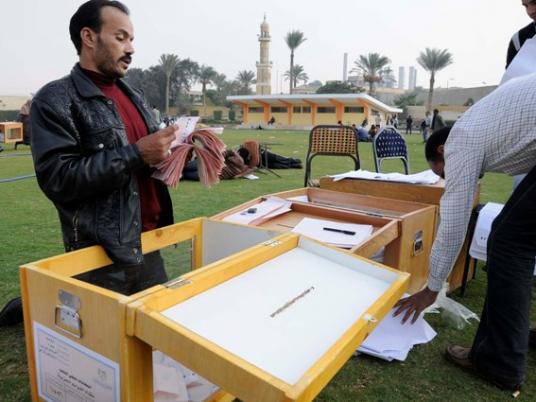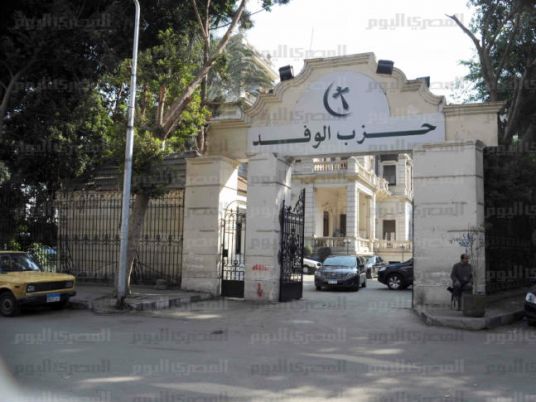
As in the first two phases of the parliamentary elections, Islamist forces have achieved a sweeping victory, winning 62.2 percent of the vote in the final phase, maintaining their lead in the overall contest.
The Freedom and Justice Party (FJP), the political arm of the powerful Muslim Brotherhood, said on its website that it garnered 35.2 percent of the party list vote when the final nine governorates went to the polls on Tuesday and Wednesday.
The ultra-conservative Salafi Nour Party said it received 27 percent, coming second in most constituencies as before.
The two parties chalked up 65 percent in the first two phases of Egypt's first general election since the February ouster of President Hosni Mubarak.
Runoffs for seats being contested by individuals in the latest phase will be held on 10 and 11 January. Some 14 million voters in nine of Egypt's 27 governorates are to elect the remaining 150 members of parliament.
Candidates from the formerly outlawed Jama'a al-Islamiya made their best performance in the elections, entering the runoff vote with four candidates: Adel Ebeid in Qena, and Mostafa Abdo, Ahmed Youssef and Haroun Hegazy in Minya.
Assem Abdel Maguid, spokesperson of Jama'a al-Islamiya, said the group expects to win 13 seats after the runoffs.
Islamists now look set to wield major influence over the shape of a new constitution, which is to be drafted by a 100-strong body that the new legislature will pick, though the Brotherhood has promised that Egyptians of all persuasions will have a say.
"We are happy with the results and are also happy that there are 15 or 16 parties in the parliament so far," Essam al-Erian, deputy head of the FJP, told Reuters.
In Egypt’s complex electoral system, two-thirds of the 498 people’s assembly seats will be elected by proportional representation, using lists drawn up by parties or alliances. Seats will be allocated proportionally based on a party's showing in each of 46 districts.
The remaining third, or 166 seats, in the lower house are open to individuals, who may or may not have party affiliations — two in each of 83 districts.
The unofficial final tallies for the third phase show that the FJP won only nine seats for individuals. They have 30 candidates competing in the runoffs, out of the total 88 candidates. The Nour Party is competing with 27 candidates, and the remaining 31 candidates are independent.
Having won 39 seats through the proportional representation system of the final phase, the total seats won by the FJP (and its electoral allies) is around 213 so far. This figure will increase after the runoffs.
Nour Party came second, winning one individual seat in this phase in addition to 27 percent of the votes through the proportional representation system. So far the total number of seats for this party is 111 seats.
The liberal Wafd Party, which came third, was far behind, gaining 14 seats through the proportional representation system in the final phase. According to a party statement, this brings its total to 37 seats.
The Wafd Party comes third at the expense of the secular Egyptian Bloc, which has won fewer votes in this phase.
Among the most notable winners in the third phase are Foud Badrawy, secretary general for the Wafd Party, and Yassin Tag al-Din, the party's assistant secretary.
One of the surprising results of the final phase is the defeat of Abul Ela Mady, the head of the Wasat Party, who lost against the FJP’s list, led by Saad al-Katatny, which won by a large margin, followed by the Nour Party.
Geographically, the Nour Party led the polls in Marsa Matruh and Wadi al-Gadid at the expense of the FJP, winning four of a total of six seats in Matruh. In Wadi al-Gadid, Nour won two seats, while the FJP took only one.
Minya, which has a large Coptic community, was the biggest shock for secular forces as Islamists won nearly 70 percent of seats. Only two seats went to the secular Egyptian Bloc in the third phase.
The secular Free Egyptian Party said it won 12 percent through the proportional representation system. The party believes that it has won at least 12 seats in the three phases.
This makes the Egyptian Bloc the fourth largest party in the parliament. The Reform and Development Party, which has many former NDP members on its lists, said that it came fifth after winning 12 seats in the three phases.
The Revolution Continues Coalition achieved its best performance in the elections, saying it won four seats in Daqahliya.
The top six parties so far are (approximate numbers):
FJP: 213 seats
Nour Party: 111 seats
Wafd Party: 37 seats
Egyptian Bloc: 12 (or more)
Reform and Development Party: 12 seats
Jama'a al-Islamiya: 13 seats (as expected by their leaders)
Note: Figures above are calculated by Egypt Independent staff. A press conference is due late today to show the final results of the third phase. However, it will take longer to name all the candidates who have won the two-thirds of the 498 people’s assembly seats through proportional representation.




